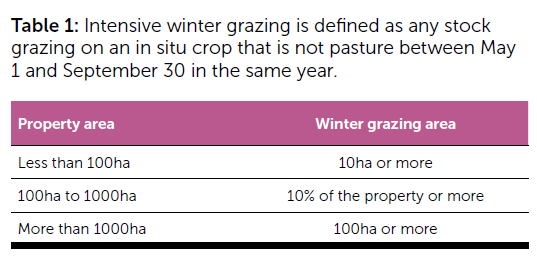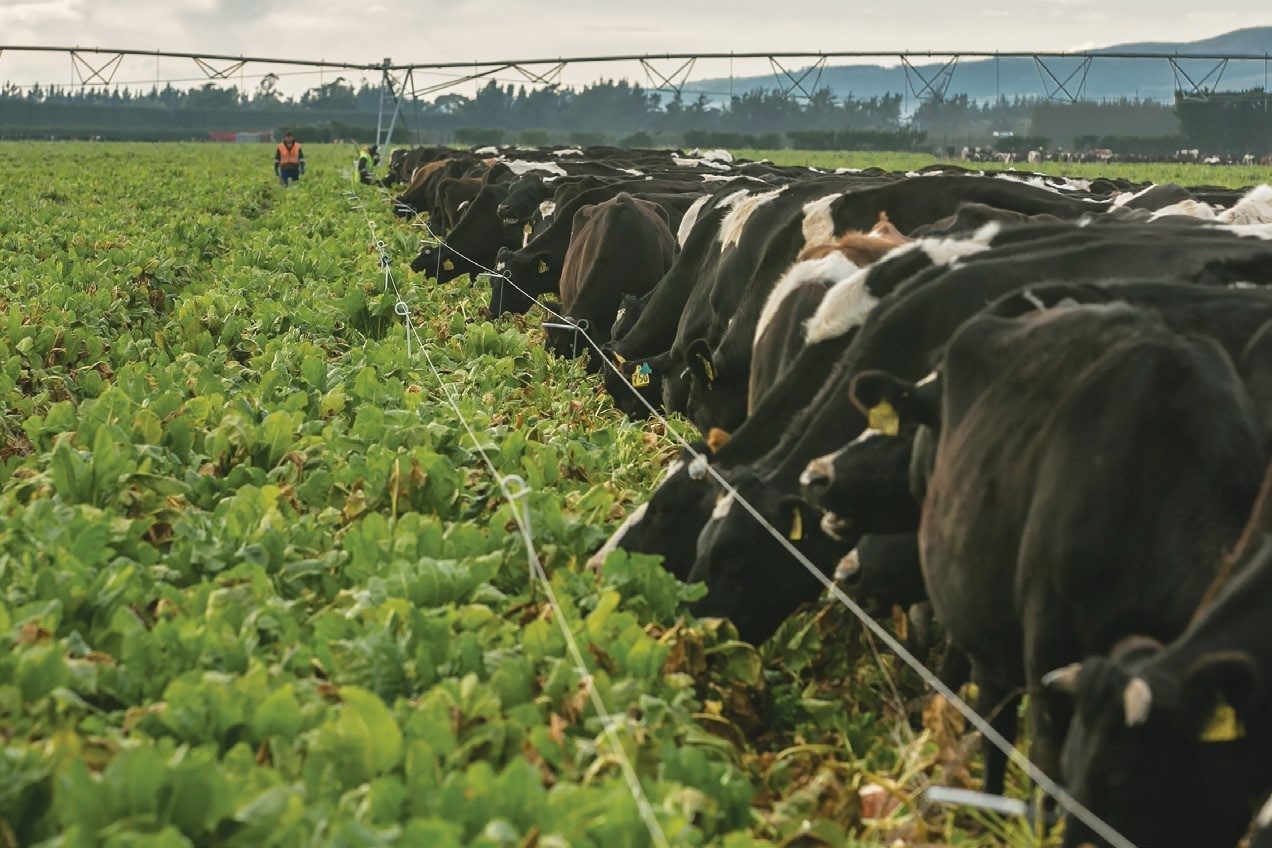Many livestock farmers – sheep, beef and dairy – may need intensive winter grazing consents.
Farmers who require either an intensive winter grazing consent or an intensification consent under the new wintering regulations need to get their skates on to meet the deadline.
Under the National Environmental Standards for Fresh Water any farmer – sheep and beef, arable or dairy – who is winter grazing cattle must now have a consent if they trigger any of five specific criteria.
An Intensive winter grazing consent is needed if:
- The maximum slope of a paddock used for winter grazing is more than 10 degrees.
- More than 50 hectares is used for winter grazing or the area used is 10% or more of the property, whichever is greater. (See table one.)
- Livestock will be less than five metres from the bed of a river, lake, wetland or surface drain even when dry.
- Critical source areas are cultivated and grazed.
An intensification consent is the consent needed if the intensive winter grazing area has increased to be greater than the maximum area used in any of the years between 2014 -2019 – known as the reference period.
The rules became operative across New Zealand in November and farmers were given six months, until May 1, to apply for a consent for this coming winter.
Farmers must have applied by the deadline but they do not have to have been granted the consent by that date.
The rules apply to all farmers and not just those in Southland where much of the discussion and debate has occurred.
Initially in Canterbury up to 1000 farmers were estimated to need a consent. Those who have moved away from fodder beet may require an intensification consent as the high yields of that crop had allowed smaller areas to be planted and grazed.
A shift to kale, for instance, may now mean a larger area has been planted to feed the same number of cows.
All farmers should have a winter grazing management plan and one will be required for consent applications.
Lincoln University Dairy Farm (LUDF) demonstration lead and Dairy Farm Management Services environmental consultant Kirsty Thomas told the recent LUDF focus day that a grazing management plan should cover each of the following headings with details for each expanded on:
- Information on why wintering paddocks had been selected and their characteristics.
- Critical source areas and waterways and how you have excluded animals from them, including 5-10m buffer zones.
- Grazing management plans.
- An adverse weather contingency plan.
- Feed allocation and animal health plans.
- Details on how the crop was established.
- Details on post grazing management.
- Photos or a diary to show how good management practices are implemented.
- A map.
More details on what Creating a Winter Grazing Management Plan and what should be included under each heading area available in the handout of LUDF’s February 2023 focus day. www.ludf.org.nz/assets/Feb23-5-Winter-Grazing-Poster-Feb23.pdfwww.ludf.org.nz/
Increasing scrutiny
DairyNZ senior scientist Dr Dawn Dalley told the latest LUDF focus day that there is increasing scrutiny on the sector’s wintering practices across the whole country.
From an animal perspective the winter grazing taskforce set up in 2019 has deemed that cows should have somewhere to lie comfortably for as long as they want.
Farmers should have the ability to move animals to shelter or dry land in adverse weather.
Cows must also have continuous, convenient access to fresh, clean water.
Cows must also have access to an adequately balanced diet.
They should not be giving birth on mud and farmers should ensure there aren’t avoidable deaths during adverse weather or that mass mortality doesn’t occur on winter grazing systems, such as acidosis outbreaks on fodder beet if transition is now carried out correctly.
Dawn told farmers consideration should be given to the most practical ways of setting up portable troughs in wintering areas so they can be moved as breaks are shifted through the crop.
It was important to carry out a winter feed budget and carry a contingency of 10% or more feed to ensure cows are adequately fed.
Wherever possible, crops should be planted in paddocks with good shelter.
The crop should be grazed in a way that provides shelter or protects the area closest to the feed face from prevailing bad weather and cold winds.
Grazing the crop into the direction of the prevailing wind, particularly a tall kale crop, will provide shelter.
It will also mean that if cows do turn their backs on the weather and crowd together they will be standing away from the feed face leaving that area less damaged and wet.
Sheltered areas should be saved for use during adverse events so cows have somewhere free from mud to lie down.
Back fencing while the weather is good provides the opportunity to shift the back fence back further and increase the area available to cows if the weather deteriorates.
“Back fencing means that area behind the back fence doesn’t get walked on again and again and is likely to be in a better condition so cows will have somewhere drier to lie down.
“Have a contingency plan and ensure the whole farm team understands it and what triggers it,” she says.
Some farmers have alternative grass paddocks available for adverse weather so cows can be stood off crop for short periods.
Some leave grass strips within crop paddocks although thought has to go into how contractors can access these so silage or supplement can be made off them over the summer or how other classes of stock can be brought on to graze them over summer or autumn without damaging the crop.
Cows should be wintered in mobs according to calving date with date scanning important to allow for regular drafting of springers close to calving so that cows aren’t calving on crops.
They should be removed from the crop at least 14-days before their due date to calve.
DairyNZ has a wide range of resources to help farmers plan for wintering, manage winter grazing and build contingency plans.
An updated gumboot scoring resource can be found on the DairyNZ website to help farmers identify when soils in wintering areas have reached levels of moisture that require actions.






